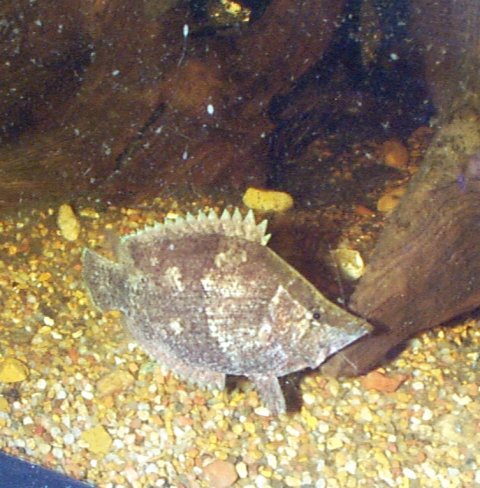Special
anatomical, physiological
or
behavioral adaptations:
Amazon
Leaf Fish swims near a plant

Leaf fishes
have very large appetites. They eat in order for their body to maintain
a normal shape. When they eat, the fishes eat very fast and widen their
eyes. The leaf fishes eat anything that their mouth size allows, even each
other. They eat large amounts of food in a day. Their anatomy resembles
the sunfish. The fishes hardly move, and they usually keep their heads
down. |
When
the female and the male leaf fishes mate, they glide past each
other on the surface and stay in that position for thirty minutes.Then,the
male goes away so the female can lay her egg. The female lays
her eggs either on or under the leaf's surface. Sometimes, she
can produce eggs while lying upside down. Then, the male comes
in to take care of the fry (baby leaf fishes) by surrounding
them with bubbles. Three days later, the male digs a hole under
the leaf in the 80 degrees Celcius temperature. On the fourth
day, the fry begin to hatch. Two days later, the male teaches
the fry to go hunt for food. The fry are fed on brine shrimp.
Finally, when the fry mature, they do not recognize one another.
The leaf fishes live in acidic water and are potential breeders.
If you want to keep the leaf fish as a "pet," then you have
to change the water continuously once a week.
|
|

